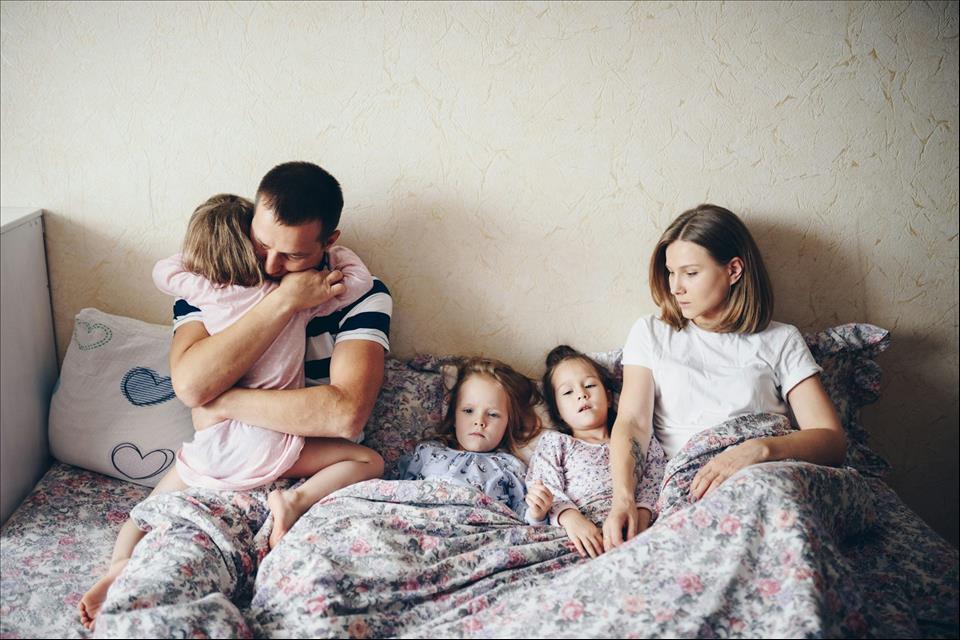
Our Research Shows The Harm The Two-Child Limit On Benefits Is Doing. Only Scrapping It Can End This
But as researchers of child poverty, we have no doubt that the best place to start reducing the high and rising numbers of children growing up in poverty in Britain today is by fully abolishing the two-child limit and the benefit cap.
We argue that both policies are astoundingly unfair. As our four-year research programme has documented, both are causing wide-ranging harm to children. They restrict children's everyday experiences and damage their ability to thrive – which in the long run affects everyone in the UK.
Children live in poverty because their families don't have an adequate income. This is partly a simple question of maths: wages don't adjust when there are more mouths to feed. It's also partly because things happen unexpectedly for some families – job loss, disability, relationship breakdown – leaving them needing extra support for a period of time.
Countries across Europe respond to these dual challenges by providing financial support that adjusts to family needs. Until recently, the UK did too. Indeed, the UK welfare state was one of the pioneers of“family allowances” in the post-war period.
But since 2017, the UK has reformed the system so that in families with three or more children, the support on offer when things go wrong deliberately and explicitly falls far short of what is needed. The UK's two-child limit, an approach that differs to other countries in Europe , restricts means-tested support to two children in a family only. It bakes child poverty into the fibre of the UK.
Its sister policy, the benefit cap, limits the maximum benefit amount available to households without adults in work. This removes further help from some of the most vulnerable.
Want more politics coverage from academic experts? Every week, we bring you informed analysis of developments in government and fact check the claims being made.
Sign up for our weekly politics newsletter , delivered every Friday.
The parents we spoke to frequently talked of difficulties in affording basic necessities for their children, including clothes and food. Many parents had resorted to using foodbanks or cut back on food spending.
Read more: 'When you've got nothing in your belly, you can't concentrate': teachers on the food banks they run in schools
The material impacts also affected children's education and their social and emotional wellbeing. Jessica is a single mum of four. Her business went under during the pandemic and her partner left the household, leaving her affected by both the two-child limit and the benefit cap.
When a hole appeared in Jessica's daughter's school shoes, there was no money to replace them straight away. Her daughter went to school wearing trainers and was put in isolation for not adhering to the dress code. Jessica explained:
Our interviews also showed that, despite parents' best efforts to shield them, children are often aware of household financial hardship and in turn try to protect their parents. Christina, a mum of three affected by the two-child limit, said of her middle child:
Our research also documents the importance of abolishing the benefit cap alongside the two-child limit. Otherwise, some families affected by the two-child limit won't see much financial gain, while others will be newly pushed into the benefit cap.
Complete removalSuggested alternatives to the full abolition of the two child limit include a “three-child limit” , or an exemption for children under five . These options would undoubtedly help some families, but would leave many of those in the greatest need still struggling.
Families are struggling to get the food they need. Klemzy/Shutterstock
Pound for pound, a three-child limit is less effective at reducing poverty than simple abolition, precisely because it is less well targeted on those in deepest poverty. An exemption for under fives would create a new cliff edge, removing significant support on a child's fifth birthday, even though we know that the costs of children rise as children get older.
Further, these approaches continue to enforce a separation between what a family needs and its entitlement to support, and therefore will continue to embed child poverty as an institutional feature of our social security system. Children's life chances will continue to be circumscribed by the number of siblings they have. Given what we know about the long-term costs of child poverty for society, these are short-sighted ways to save money today.
It is very encouraging that the government has committed to a child poverty strategy , and that the prime minister has said he will be “laser focused” on tackling child poverty.
But, as we wait for the strategy to be published, the number of children harmed by the two-child limit rises daily. Nearly two-in-five larger families are now affected and this is predicted to rise to 61% of larger families by the time the two-child limit has full coverage.
If the child poverty strategy is to have real impact, its starting point is straightforward: both the two-child limit and the benefit cap need to go, and urgently, before more damage is done to children's lives.

Legal Disclaimer:
MENAFN provides the information “as is” without warranty of any kind. We do not accept any responsibility or liability for the accuracy, content, images, videos, licenses, completeness, legality, or reliability of the information contained in this article. If you have any complaints or copyright issues related to this article, kindly contact the provider above.






















Comments
No comment